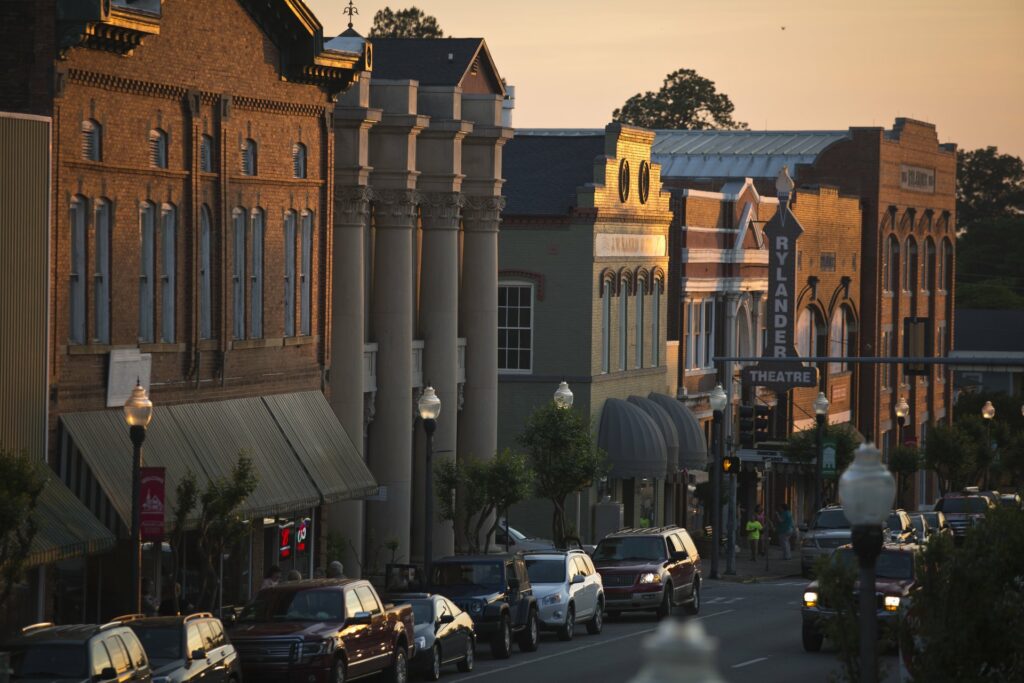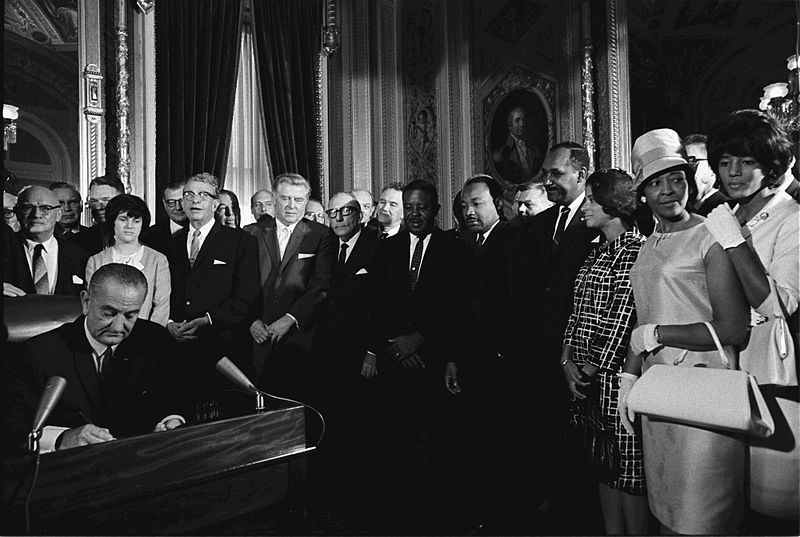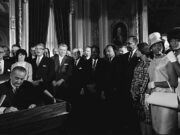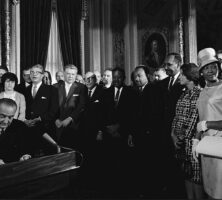Following the Albany Movement of 1961-62, civil rights activism in Georgia centered next on Americus, a small town in Sumter County located some thirty miles north of Albany in the southwestern portion of the state. Although the Student Nonviolent Coordinating Committee (SNCC) targeted the area as part of a voter registration and citizenship education plan, the outsiders soon discovered an energetic and committed group of local activists working through an organization called the Sumter County Movement. The Americus Movement can be most easily understood by examining three distinct phases between 1963 and 1965.
Learning to March—1963
In July 1963 less than a dozen activists began the first marches when they protested against the segregated Martin Theater. Soon, the ranks of protesters grew to more than 250, and arrests became widespread. Among the protesters were a large number of teenagers and preteen students. Local law enforcement was led by police chief Ross Chambliss and county sheriff Fred Chappell, who Martin Luther King Jr. called “the meanest man in the world” after a visit to Americus in 1961. Although arrests of civil rights activists were commonplace throughout the South, two particular cases in Americus attracted national attention, and northern media outlets exposed the depths of racism in the small southwest Georgia community.

Courtesy of Explore Georgia.
The first incident occurred in late July when more than thirty girls were arrested for marching and were later sent to a stockade in Leesburg, in neighboring Lee County. On September 14 the front page headline of the national edition of the Chicago Defender read: “Kids Sleeping on Jail Floor: Americus Hellhole for Many.” As damning as the headline was, the photographs taken by SNCC photographer Danny Lyon, who snuck into the stockade when several of the imprisoned girls distracted a guard, provided indisputable proof of the horrific conditions. The images revealed a filthy room with barred windows and a broken toilet. During the same summer, law enforcement officials arrested SNCC workers Ralph Allen, Don Harris, and John Perdue as well as ZevAelony of the Congress of Racial Equality. These men, known as the Americus Four, had played a key role in organizing marches and boycotts. Interestingly, they were charged with breaking Georgia’s 1871 Anti-Treason Act, which carried as a possible punishment the death penalty. In November a Washington Post reporter drew attention to the tactics—reverting back to an antiquated law—and labeled such actions “the Americus way.” Eventually, a federal district court dismissed the case.
Children of Choice—1964
In the fall of 1964 David Bell Jr., Robertiena Freeman, Dobbs Wiggins, and Minnie Wise entered Americus High School under the so-called Freedom of Choice Plan. The four students faced intense and constant harassment, and after a few months only Freeman remained enrolled in the school. She had prevailed as one of the girls at the stockade and was determined to honor her commitment to the cause of racial justice. The forces of racial hatred, however, were equally determined to maintain segregation. Just weeks before the school year ended, Freeman was once again victimized by local law enforcement when she and her boyfriend were arrested. Thrown in jail during exam week, Freeman pleaded with her mother to retrieve her school books so that she could prepare for her exams. Ultimately, Americus officials released Freeman and allowed her to take the exams on the condition that she leave the state for the summer of 1965. They hoped her absence would dampen the spirit of protest. They were wrong.
The Next Selma—1965
In July 1965 Hosea Williams of the Southern Christian Leadership Conference (SCLC) vowed that Americus would be the next Selma, Alabama, an intimidating reference to the famed Selma-to-Montgomery march for voting rights that had taken place during the spring. Americus caught Williams’s attention when it arrested four Black women, Mary Kate Fishe Bell, Mamie Campbell, Lena Turner, and Gloria Wise, for voting in the white women’s voting line. SCLC and SNCC, under the direction of John Lewis, joined forces with members of the Sumter County Movement and filled the streets of Americus with more than 600 estimated marchers. The Voting Rights Act was signed into law in early August, and before the end of the year more than 2,000 African Americans had registered to vote in Sumter County. After schools opened in late August, the number of Black students enrolled in previously segregated schools increased from four in 1964 to almost ninety in 1965. Segregation had been defeated.

Photograph by Wikimedia
Reflection
The Americus Movement opened doors for African Americans, some of whom now hold political office and key positions in the school systems and other civic organizations. To be sure, progress has been made, but racial reconciliation has not been fully achieved. In September 2007 veterans of the movement reconvened in Americus as part of a newly established organization, the Americus–Sumter County Movement Remembered, which is dedicated to commemorating and preserving the history and legacy of the Americus Movement.







